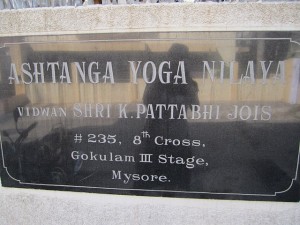This guest post is by Brandon Yanofsky of TheSalonMarketer.com.
True anxiety can be difficult to imagine for those who have never experienced it deeply. I remember once, when I was studying film, sitting in front of a TV ready to pull my hair out, because I couldn’t figure out how they had lit a scene in an Ingmar Bergman movie. It wasn’t something I needed to know. I knew it wasn’t a big deal. But that’s what anxiety does to you. And that’s how most of my life was.
All of us experience fear or anxiety to some degree, though. These five simple tips helped me overcome my anxiety and do what I’ve wanted to do. I’m hoping they’ll inspire you to do what you’ve always wanted to do.
1. Realize there’s always a reason not to do it
Our brains naturally tell us all the reasons why we shouldn’t do something. We might fail, we might be embarrassed, and so on. But as soon as you embrace that negative thoughts are natural, they are much easier to overcome.
I saw Chris Brogan speak recently and had the opportunity to talk with him. And that’s when my negative thoughts started creeping up. I could have just sat there: it would have been much easier. What could I possibly say to him? What if I sound like an idiot?
There were so many reasons not to do what I wanted. I sat there for a few minutes and let them run through my head. And then I stood up, said “darn it!” and went up and talked with him.
What do you want to do, but have been talking yourself out of? Run through all the reasons not to do it. Make a list. Really acknowledge those reasons. Now, just do it!
2. Go with your first instinct
Remember when your teacher used to say, “Trust your instincts on your test. If you thought C first, choose C.”? Well, do the same with your life. The subconscious is pretty good at figuring out what we really want. So listen to it more often.
For about six years, I wanted to be a film director. I went to college for it, and spent a lot of money learning. Then one day, I just didn’t feel it any more. But I fought the feeling. I told myself, “You have to keep doing it.” And I kept myself miserable for an entire year. Then, I realized it wasn’t worth fighting any more. My instincts were right. They had told me what I really wanted. And I had ignored them.
From that moment on, I’ve listened much more closely to what my instincts say. And they’ve yet to lead me astray.
3. Accept that mistakes are inevitable, but failure is not
A big issue I’ve had is talking to people when I first meet them. I usually stumble, lose my train of thought, get nervous, and just look like a fool. So for a while, I would just sit in a corner and listen. It felt right—for a little while. Then I became impatient and said “I’ll try my best.”
I still mess up a lot. I say some words strangely. I get strange looks as I try to express myself. I’ve accepted that I’ll make mistakes. But I don’t think I’ve ever failed. Accept that you’ll make mistakes and you’ll be able to do a lot more. You only fail when you give up.
4. Get outside your nonexistent comfort zone
I know a lot of people who just get carried along with the flow of life. They have a routine. They take the same route to work every day. They get to work at the same time. They leave at the same time. Go to sleep at the same time. And repeat this for most of their lives. They are living within their comfort zone.
With anxiety, I never had a comfort zone. I was always uncomfortable. I spent a long time seeking my comfort zone. When I finally accepted it doesn’t exist, I became much more comfortable being uncomfortable. I started doing a lot more.
And here’s a secret: you don’t have a comfort zone either. Once you accept this, you can live life fully.
5. Don’t make things into a big deal
The average person fears public speaking more than death. But I feared walking in public areas more than death and public speaking combined.
When you have anxiety, everything seems like a big deal. You’ve probably heard people say, “If I just don’t get an A on that test, I’m screwed.” I was like that. Until I spent some time in Dominican Republic and saw first-hand how few things are a big deal. There, five-year-olds go all day out in the sun, without a drop of water, even though there are jugs of water behind lock and key. But they don’t care. They’re still outside having fun.
I didn’t get an A. That’s a big deal. You didn’t get that raise last week and can’t buy a new BMW. That’s a big deal. She goes all day without a drink of water. No problem…? Wouldn’t you say something’s a bit of out whack?
Live life realizing that most things aren’t that big a deal. You’ll find you are much happier.
I hope you found these tips useful. I love writing about this, so if you have any questions, I would love love love to answer any and all. Just remember, follow your instinct. If you want to email me, do it.
Brandon Yanofsky is a small business owner, entrepreneur, and marketing consultant, but loves talking and writing about life. He blogs for boutique salons at TheSalonMarketer.com and tweets as @byanofsky.












Recent Comments